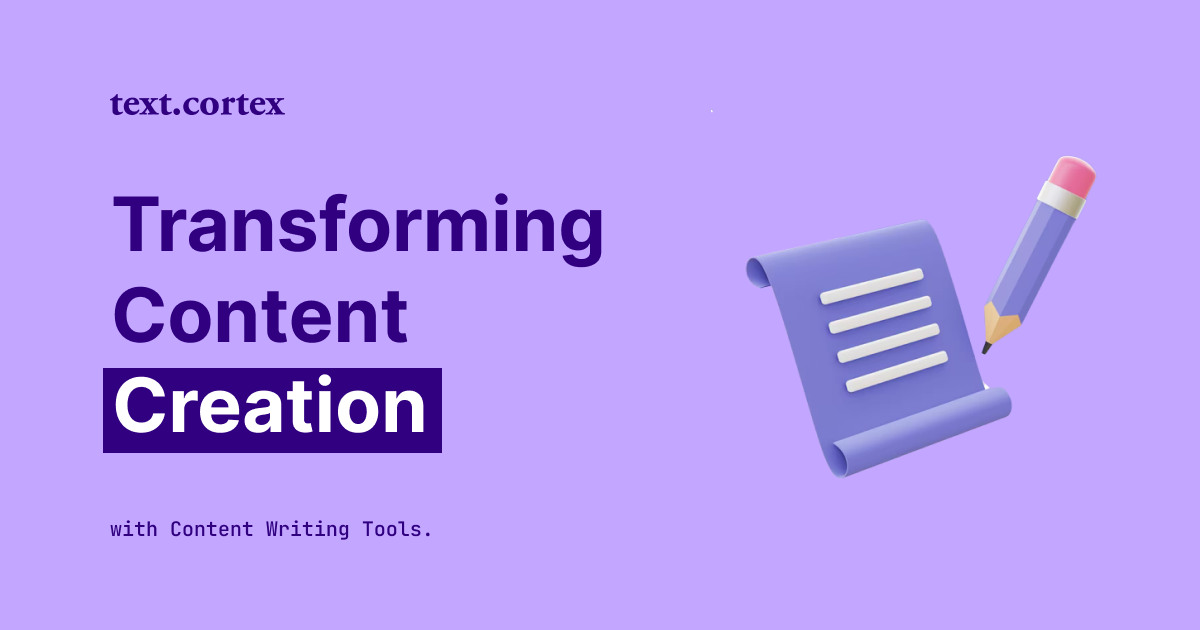Did you know that, according to Hubspot, blogging is the third most popular content marketing strategy, after videos and eBooks.?
Now, if you own a blog page, you know it already has 'some' conversion funnel. People visit your pages — some stay, explore and purchase, and some don't.
However, does your blog conversion funnel bring desirable results?
That depends on its optimization — how you've arranged your content on your blog, which encourages customers to convert more efficiently.
HubSpot has mastered this subject as a one-stop shop for all business needs.
Thus, in today's article, we'll reveal the approach that Hubspot uses as part of their blog conversion funnel and provide examples you can implement to improve your customers' buying journey and conversions in general.
Let’s get started!
What Is Conversion Funnel?
A conversion funnel visualizes the flow of potential customers as they progress on their journey of becoming paying customers.
And to get these leads, we use a variety of tactics, including SEO, content marketing, social media, paid advertisements, and even cold outreach.
And one of the most important methods of building blog conversion funnel is called the AIDA model — awareness, interest, desire, action.
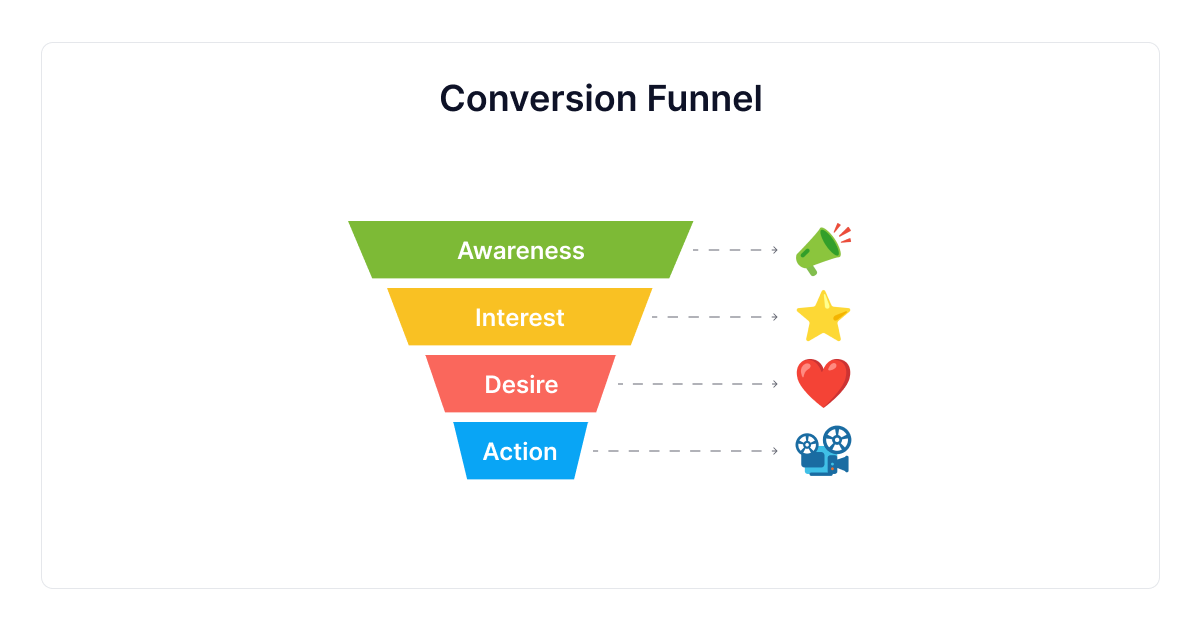
You can improve the flow of the conversion process if you can understand it and evaluate it.
Let’s learn about each step in the funnel:
1. Awareness
Your prospective buyers first learn about you or your business.
This is the most critical part of the funnel because you need to reach a broad audience, entertain them to learn more about your business, and draw them into the funnel.

You can do that with PPC campaigns, organic traffic, and social media platforms.
2. Interest
At this stage of the funnel, you're arousing leads' curiosity about your offerings.
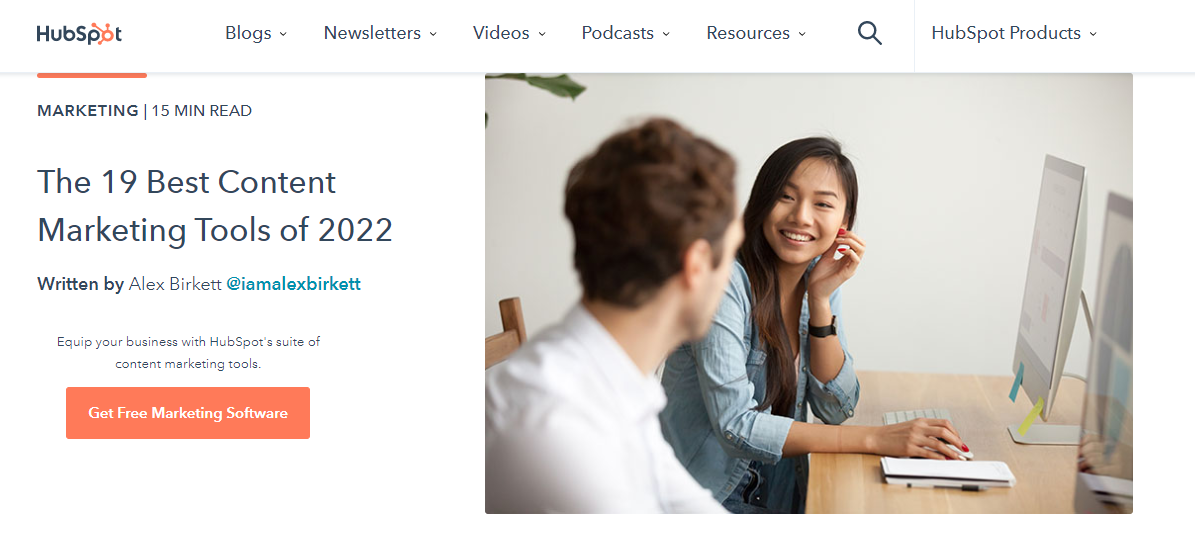
Here you can use your content to address specific challenges those leads face - high-quality content and an optimized website are the best tools to achieve that.
3. Desire
Not that 'the chosen' ones are still around, reasonably interested in your product or service, you'll need to make them desire your product or service to make a purchase.
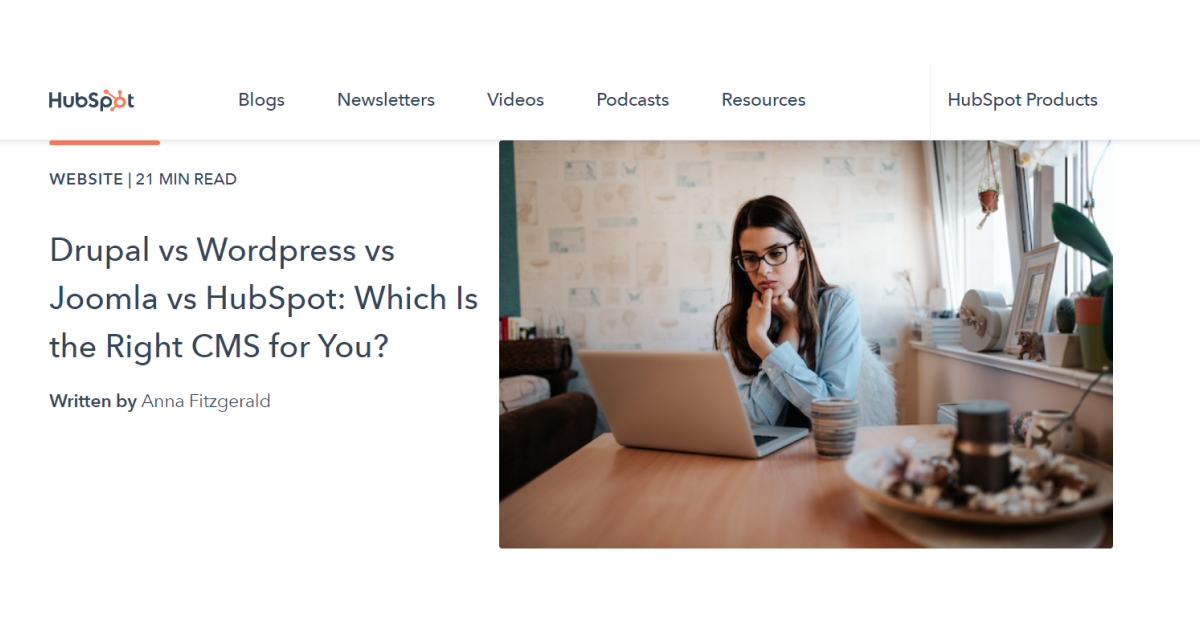
This part of the funnel is ideal for an email drip campaign or autoresponder series because it keeps nurturing the connection between your business and future clients.
4. Action
The final part where your leads take specific actions — making a purchase or joining an email list.
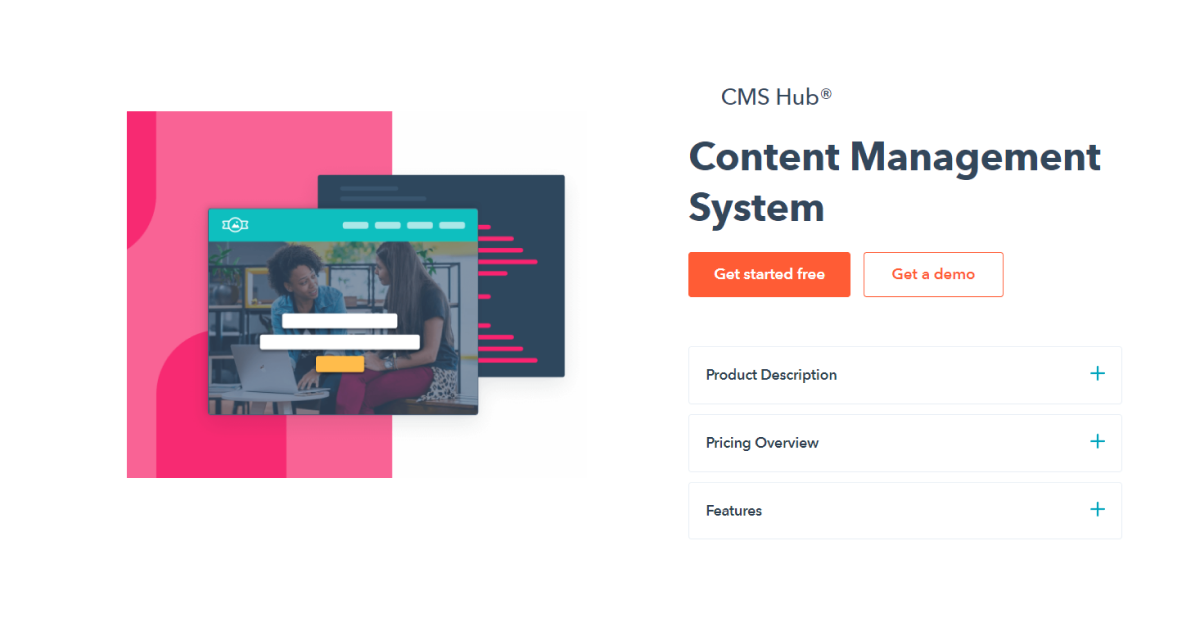
Due to the low conversion rate of the initial pool of potential customers, this is the narrowest portion of the funnel.
But why do we need a content marketing funnel strategy at all?
Benefits Of Content Marketing For Conversion Funnel
According to Hubspot, here are some of the most important aspects of content marketing:
- Targets audience based on demographics, psychographics, or other criteria.
- Uses storytelling to influence customers to interact with the brand and relevant offerings.
- Offers value, whether through knowledge, education, or amusement.
- Provides personalized customer experience because it creates a dialogue between the brand and potential clients.
- Establishes consumer trust if the information is valuable and relevant.
- Influences purchasing decisions.
Now that we know how to lead our prospects through the funnel let’s figure out how to implement the Hubspot blog conversion funnel to get the results we desperately wait for.
Hubspot’s Topic Cluster Model For Blog Conversion Funnel + Examples
Up until recently, using focused long-tail keywords while creating content was the norm for content marketers and top SEO companies.
The issue with this approach is that every time you post new content, it is in direct competition with your previously released content and that of your competitors.
On the other hand, Hubspot’s topic cluster model directs your attention toward a certain area where you wish to establish your brand’s authority.
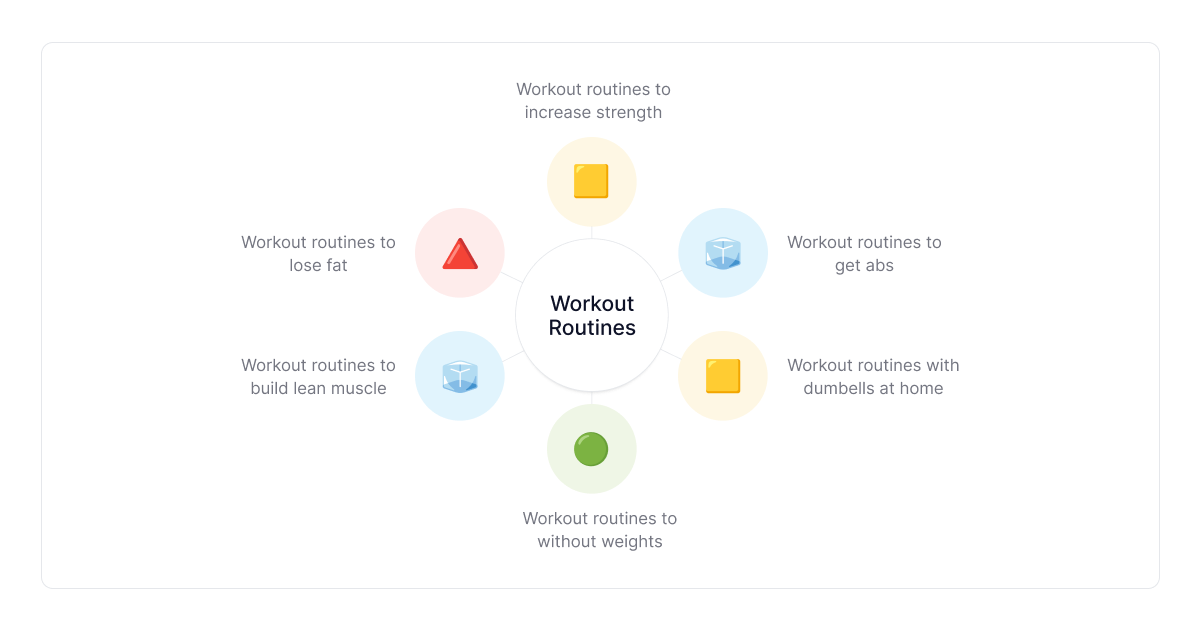
After that, you can write content using various keywords associated with the topic of choice and link them all together.
By doing this, you reduce the chance that your content will compete with one another for the top SERP positions and improve your content's SEO by pointing high-quality backlinks at it.
Here is how to do that:
1. Establish your brand as an authority
One of the most important things when implementing a topic cluster model is to determine what is the subject of your expertise.
People prefer, and value content published by brands considered an authority in their niche and industry.
They are also more willing to trust you and your recommendations, even if the products you’re recommending are your company’s.
And here is a statistical fact to prove that point:
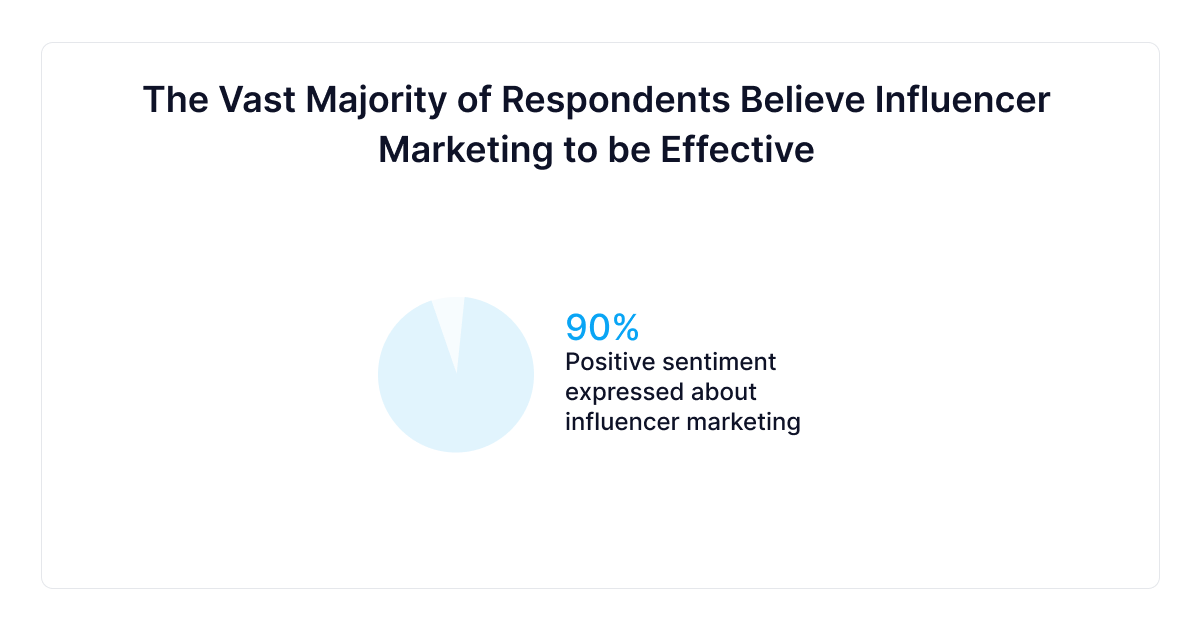
A reason for such a high number of positive impressions lies in the fact that 68% of people say they never experienced influential marketing fraud.
That is obviously one of the reasons why Coca-Cola doesn’t sell brandy — they stick to what they are good at.
2. Improve your website’s user experience
Regarding their content, most blog blogs are somewhat haphazard, making it challenging for your website's users to find what they are looking for.
Additionally, this approach can force your content marketing team to produce multiple versions of the same piece of content, which would be a waste of time and resources.
Instead, you can arrange and link related pieces of content using the topic cluster concept.
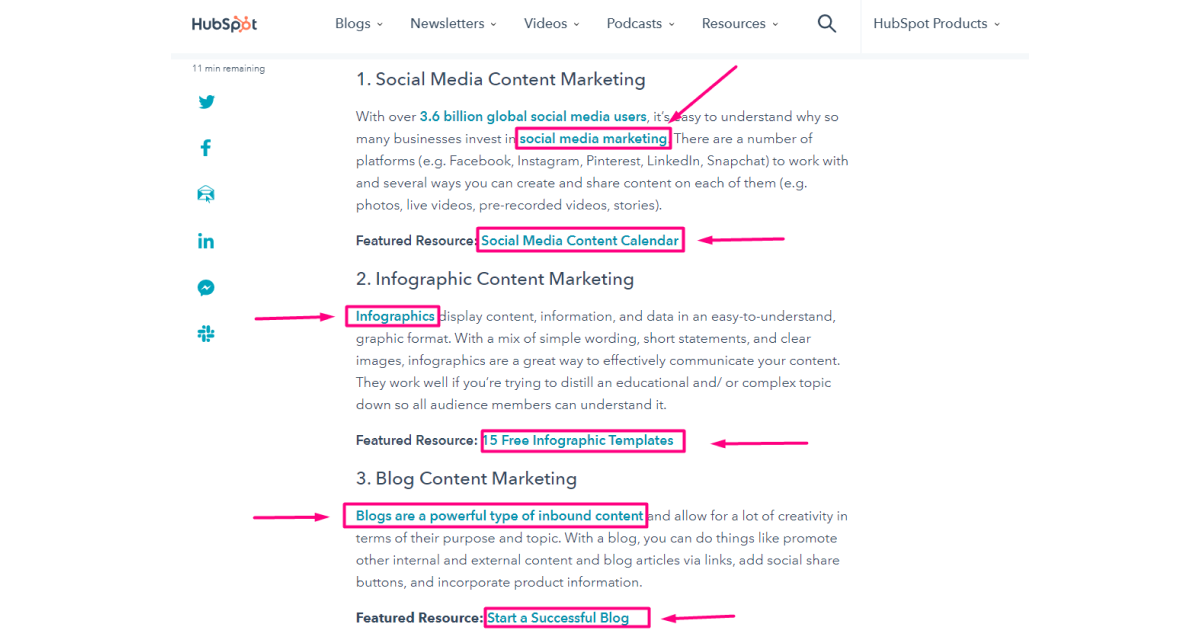
That way, people will easily find more relevant content and stay longer on your website (the factor that influences your search rankings).
Doing this makes it easier for people to find more of your material. And the longer they stay on your page, the more they will learn about your products and be more informed about them, making the converting process much more manageable.
3. Utilize pillar page
The pillar page is a piece of writing that is 3000 to 5000 words long. It provides some valuable information while still leaving room for the answers from various clusters of content.
The pillar page is the blog conversion funnel phase, where you have to choose the topic you want to rank for.
It should be detailed enough to allow you to discuss all the many topics on a single pillar page and yet broad enough to write multiple articles on the subject.
Yoga, for instance, is an interesting topic, but it would be impossible to cover everything in one piece.
However, "yoga practices" is so broad that you can write several different articles about it, such as "yoga practices for back pain" and "benefits of practicing yoga."
Nevertheless, you can still write a thorough post about" best yoga practices" that covers all the relevant topics.
Let's take a look at how Hubspot organizes pillar page on the "How to write a blog post" topic example:
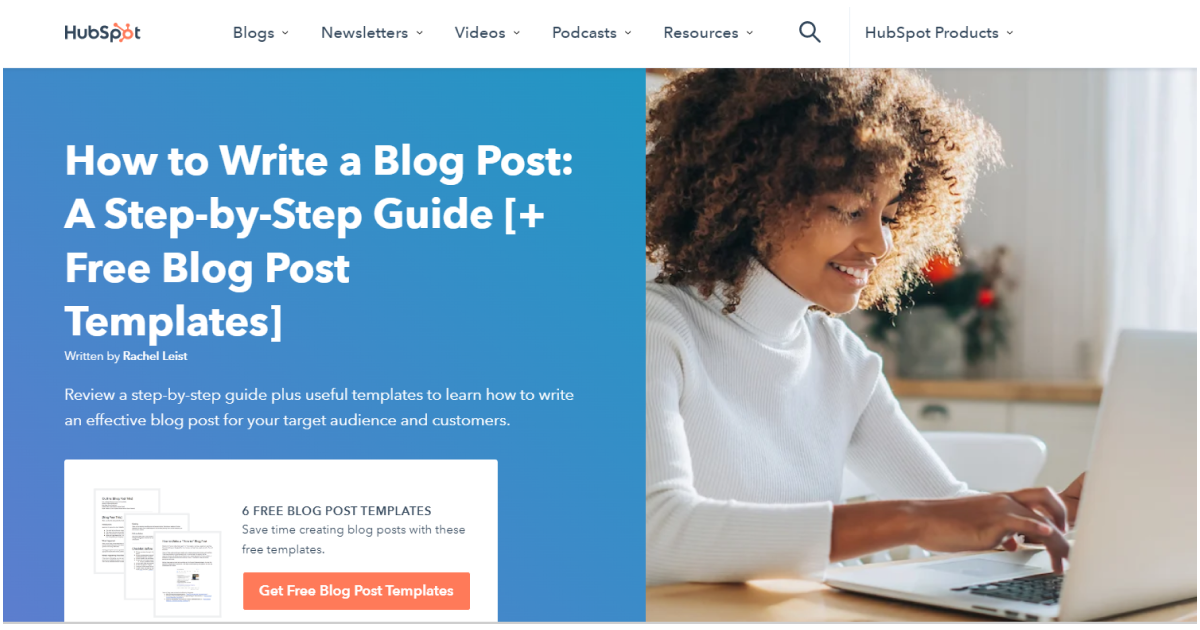
Let's now analyze the connections Hubspot makes between this topic and similar content to develop a topic cluster model:
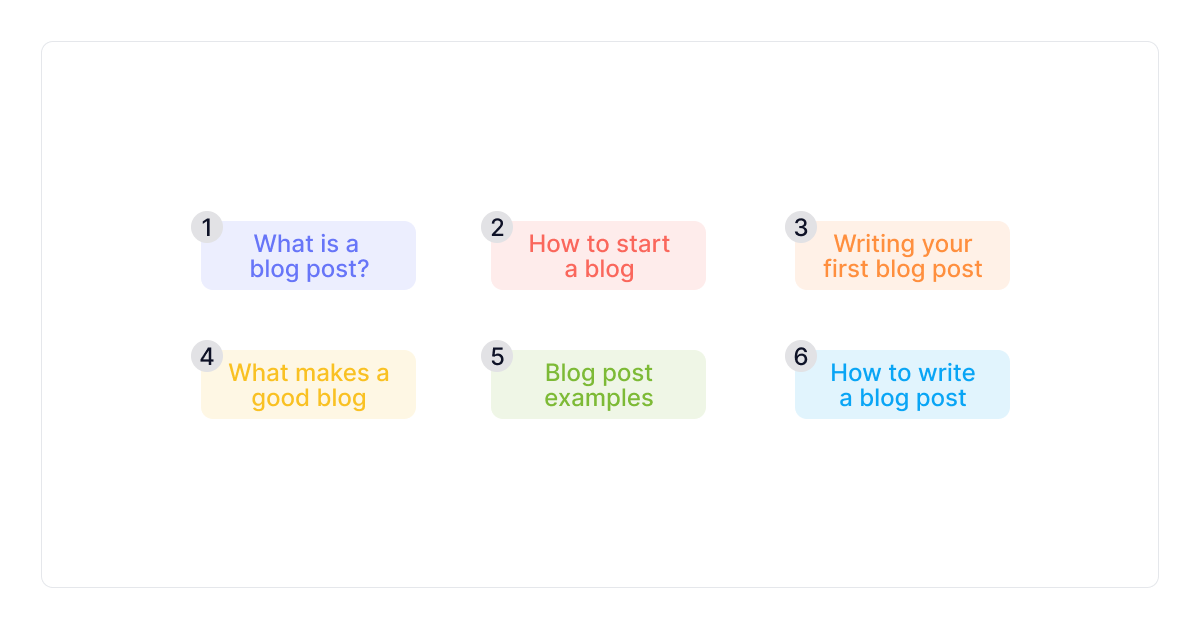
Here is a clear example of how to group your content around a specific topic.
The best part about the topic cluster model is that connections between content work both ways.
For example, if you open "What is a blog post?", there will be a connection with the pillar page, "How to write a blog post?" in our case and vice versa.
This strategy allows you to search for a broad subject and then narrow down to find more particular topics that are connected, which makes exploring the page smoother, right?
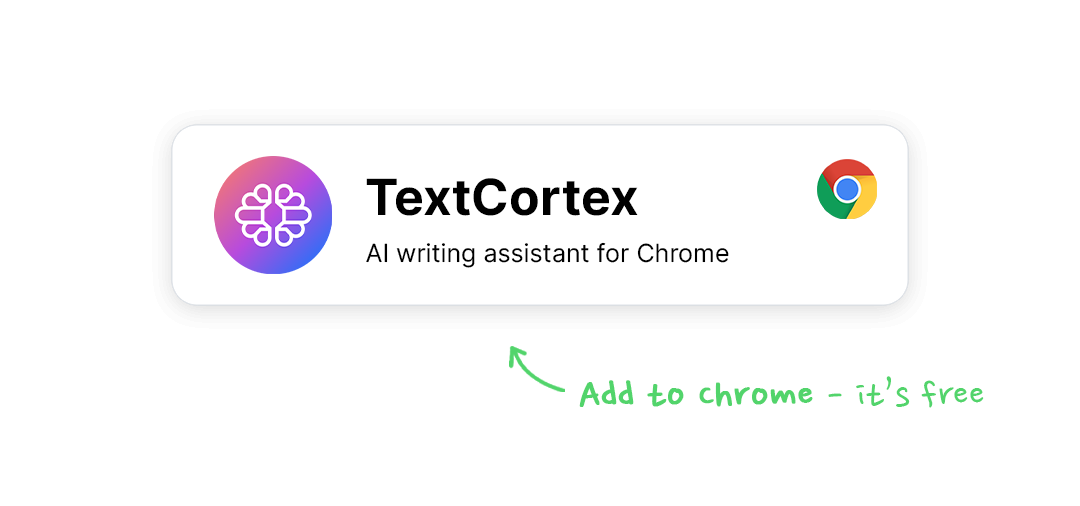
4. Create content clusters
The various cluster contents linking to the pillar page are another element of the topic cluster concept.
Each of these articles focuses on a targeted keyword associated with the topic you want to rank for, unlike the pillar page, which focuses on a single main topic.
Additionally, they are internally linked, directing back to the pillar page (hence the name).
You should create a range between 5 and 10 articles for an effective content cluster.
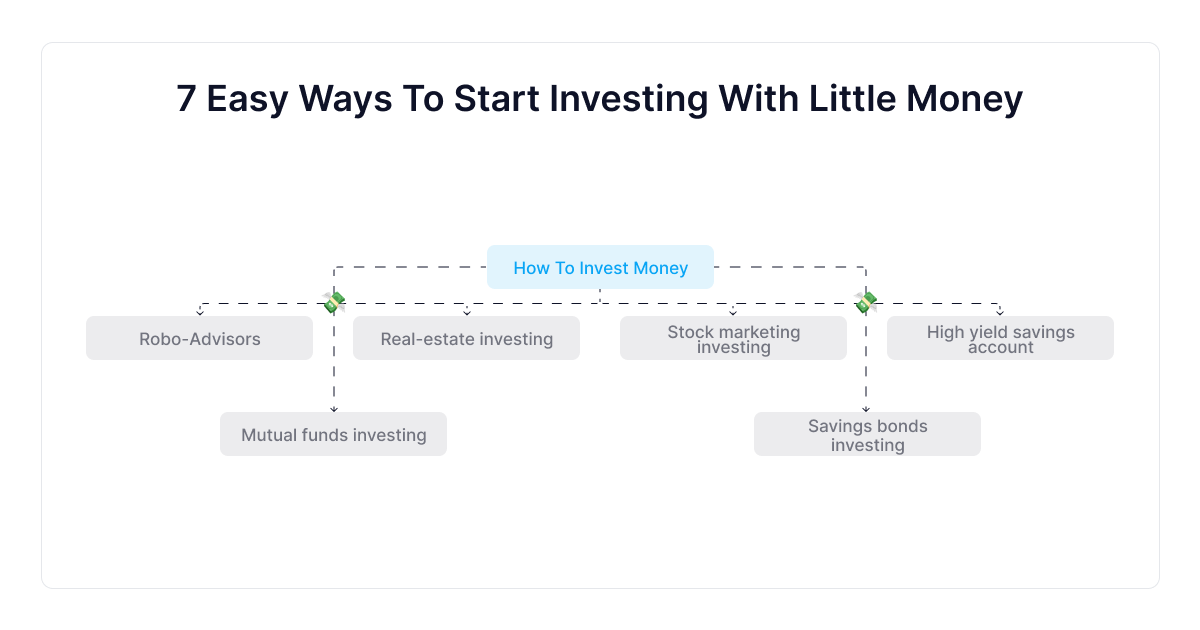
If you are unsure how to do that, AnswerThePublic is a fantastic resource.
To use it, you only need to enter the keyword for your main topic, which you want to use as a pillar page.
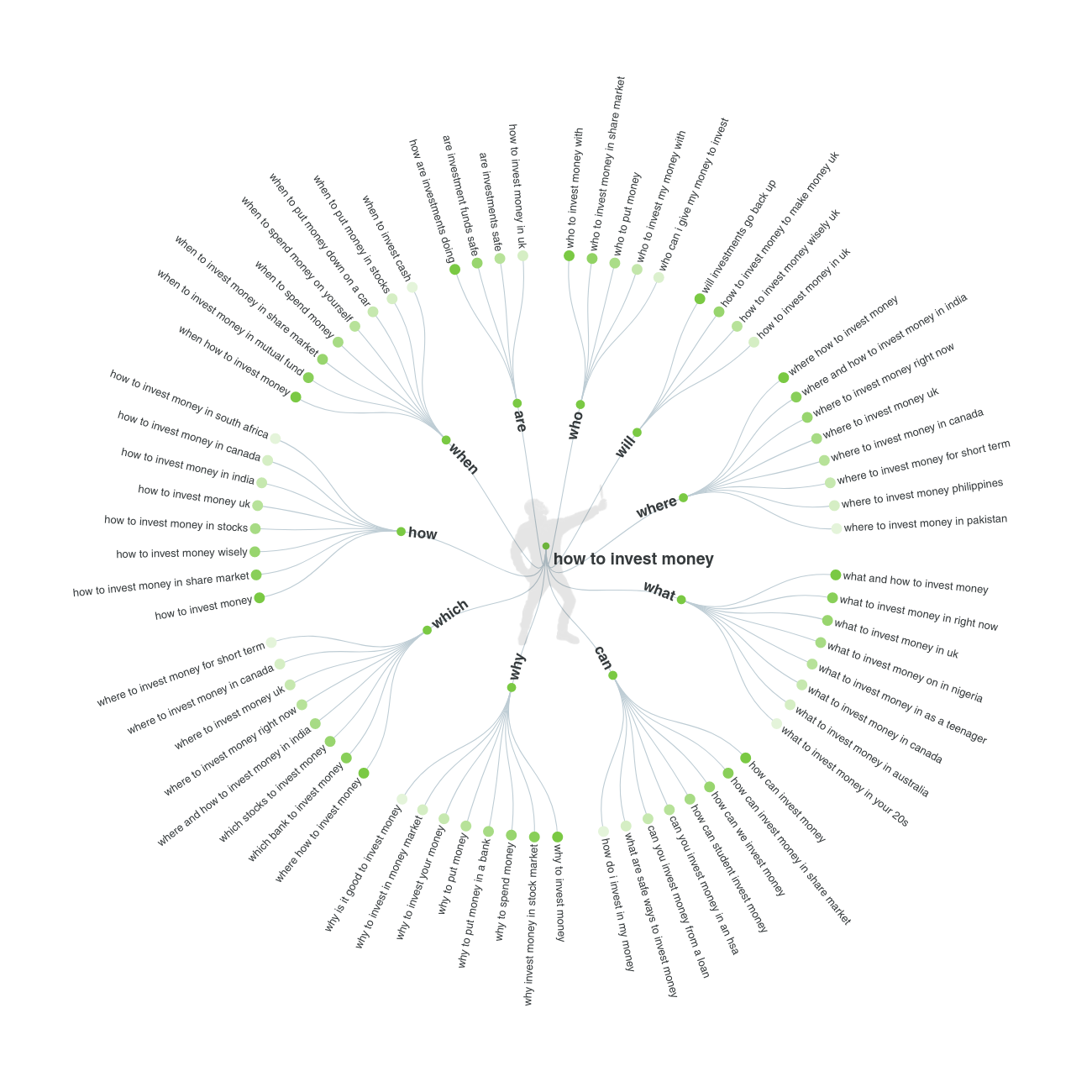
Based on search queries, the AnswerThePublic tool compiles a list of the most frequently asked questions concerning your chosen subject.
You can use subjects and keywords you receive to create later cluster content that links to your main page and vice versa.
As a result, your main subject will focus on each component while linking back to the cluster pages, providing users with an additional thorough content.
This will not only improve your readers' experience, but it will help boost your Google rankings.
And if you're wondering how to connect cluster content, we've arrived at the final section of the topic cluster model.
5. Connect content using hyperlinks
This element is likely crucial because it connects the cluster content with the pillar page. Additionally, it links the various cluster contents together.
Whenever you connect to other content, make sure the links are reciprocal. That means links from your pillar page should point to your content clusters and back.
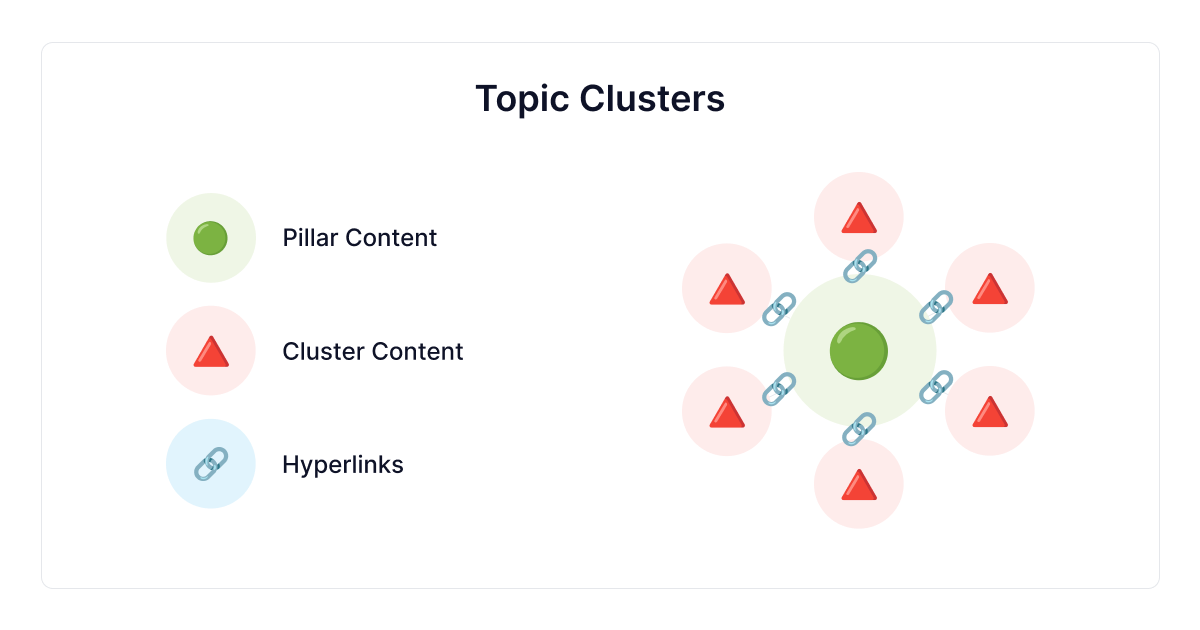
Check your existing content to see if there is anything you can update and link to your pillar page.
By doing this, you can make the most of your current material and direct your efforts toward filling in any gaps you may discover.
A topic cluster model allows you to structure your content better and ensure that your target audience finds the answers they need rapidly.
Additionally, topic clusters boost your content's search engine rankings and increase traffic, leads, and sales.
Instead of competition in content performance, this strategy will create collaboration to improve your SEO by having a trickle-down impact.
Skyrocket Your Blog Conversion Funnel With TextCortex
People frequently identify with the challenges they are facing.
And, because the problem is a lack of awareness about how to address it, prospects frequently learn about them and solutions that can help them when they appear.
Building a blog conversion funnel means continually delivering valuable information in your content that solves those pain points and persuades your prospects that you're the expert in that field.
This excellent marketing tactic will position your website as a credible and trustworthy source with which visitors will gladly do business with.
Furthermore, your blog posts are a legitimate technique to promote your products as a dependable solution. Once you gain the trust of your leads, they will not hesitate to purchase from you - that is a well-played conversion tactic.
But how do you achieve that without wasting time and money?
TextCortex offers all-in-one solutions that will save 80% of your writing time, produce content at scale, and bring incredible results.
Part of the reason is that TextCortex utilizes machine learning processes and complex algorithms to create natural-sounding output.
How is that?
Unlike GPT-3 module-based AI writing assistants, our AI writers generate text from a vast knowledge base of 3 billion best practice sentences. That means that your content is human-like by default.
That includes any content form:
- Product titles and descriptions
- Blog titles and articles
- Ads
- Social media posts
- Emails
You can use TextCortex as a web application and rewriter extension.
Web application offers flexibility that allows you to create, edit, format, and save documents on your TextCortex account.
Rewriter extension will assist you wherever you need it.
Let's see how to use TextCortex Chrome extension to generate blog posts:
If you want to change part of your text, just hover over a sentence or paragraph you would like to modify and let TextCortex rewrite, summarize, expand, or even transform your bullet points into the email.
Sign up today and see how TextCortex improves your marketing strategy execution by consistently producing high-quality content and transforming every opportunity into successful conversion.

![Hubspot Blog Conversion Funnel & How to implement it? [2024 Guide + Examples]](https://textcortex.com/cdn-cgi/image/format=avif,quality=90/https://assets-global.website-files.com/622611a2b23d0e6b270fba81/62dae7ef64e33648a4aa2891_hubspot-blog-conversion-funnel.png)
.jpg)
